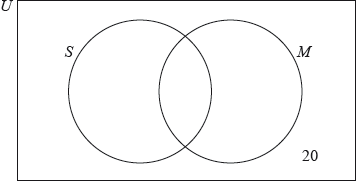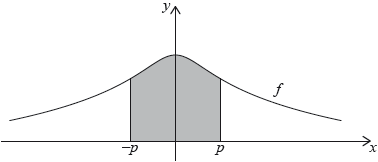| Date | May Specimen paper | Marks available | 8 | Reference code | SPM.2.AHL.TZ0.11 |
| Level | Additional Higher Level | Paper | Paper 2 | Time zone | Time zone 0 |
| Command term | Solve, Show that, and Hence | Question number | 11 | Adapted from | N/A |
Question
A large tank initially contains pure water. Water containing salt begins to flow into the tank The solution is kept uniform by stirring and leaves the tank through an outlet at its base. Let grams represent the amount of salt in the tank and let minutes represent the time since the salt water began flowing into the tank.
The rate of change of the amount of salt in the tank, , is described by the differential equation .
Show that + 1 is an integrating factor for this differential equation.
Hence, by solving this differential equation, show that .
Sketch the graph of versus for 0 ≤ ≤ 60 and hence find the maximum amount of salt in the tank and the value of at which this occurs.
Find the value of at which the amount of salt in the tank is decreasing most rapidly.
The rate of change of the amount of salt leaving the tank is equal to .
Find the amount of salt that left the tank during the first 60 minutes.
Markscheme
METHOD 1
M1
= A1
AG
METHOD 2
attempting product rule differentiation on M1
A1
so is an integrating factor for this differential equation AG
[2 marks]
attempting to multiply through by and rearrange to give (M1)
A1
A1
attempting to integrate the RHS by parts M1
A1
Note: Condone the absence of C.
EITHER
substituting M1
A1
using as the highest common factor of and M1
OR
using as the highest common factor of and giving
(or equivalent) M1A1
substituting M1
THEN
AG
[8 marks]
graph starts at the origin and has a local maximum (coordinates not required) A1
sketched for 0 ≤ ≤ 60 A1
correct concavity for 0 ≤ ≤ 60 A1
maximum amount of salt is 14.6 (grams) at = 6.60 (minutes) A1A1
[5 marks]
using an appropriate graph or equation (first or second derivative) M1
amount of salt is decreasing most rapidly at = 12.9 (minutes) A1
[2 marks]
EITHER
attempting to form an integral representing the amount of salt that left the tank M1
A1
OR
attempting to form an integral representing the amount of salt that entered the tank minus the amount of salt in the tank at = 60(minutes)
amount of salt that left the tank is A1
THEN
= 36.7 (grams) A2
[4 marks]




